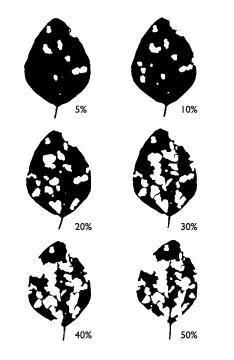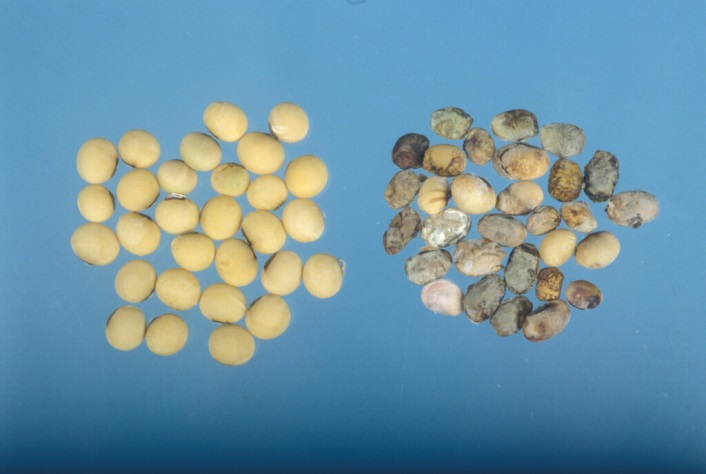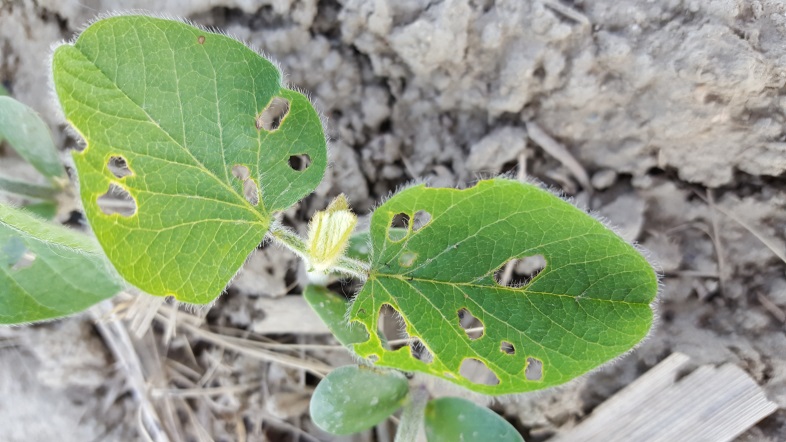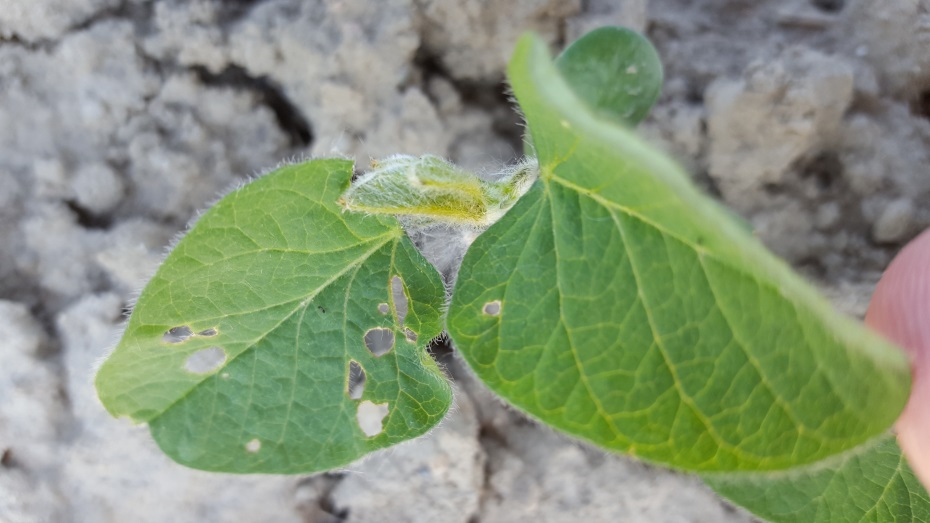Bean Leaf Beetle in Soybeans – Why Should We Worry?
June 9, 2017 | Category: Agronomy |With the introduction of Class 12 regulations, many soybeans were sold as Fungicide Only or as No Seed Treatment. There is a good possibility that we may be challenged with Aphids and Bean Leaf Beetle this coming season. For those that remember 2003 and 2004, we had a heavy population of Bean Leaf Beetle which reduced yield and hampered soybean quality. Since the Introduction of Class 12 Insecticides such as CruiserMaxx® and Acceleron®, we have not had any real instances where these insects were detrimental to our crop.
Description

As you can see, the beetle comes in many colors. One main noticeable mark that determines it to be a Bean Leaf Beetle is the black triangle behind the head on the thorax. They are usually very easy to find if you are in the field at feeding, but in most cases, you see the damage to the leaf before you notice the insect.
Life Cycle
Before we explore the damage that Bean Leaf Beetle could do to our soybean crop, we must first understand the life cycle of these insects. The overwintering adults emerge from protected areas (eg. woodlots) in late-April or early-May. They usually appear in the earliest planted soybean and start to feed off the first leaves. They then lay eggs usually until mid-June. Eggs hatch usually beginning around mid-July. Feeding begins on plants and pods. This part of the cycle can occur for two generations. In most cases, the second generation occurs mid to late August and does the most damage. They pierce the pod and damage the seed. Staining will not usually affect the grade of the soybean, but severe damage can lead to light soybeans that will be blown out the back of the combine thereby reducing yield. Once feeding is complete, they return to the soil and overwinter until next spring and start the cycle all over again.
Damage
As stated above, the beetles feed both on the plant leaf and the pods. The damage on the leaf can reduce the amount of leaf surface available to take in the sunlight to support photosynthesis. The photo below shows the percent damage when looking at the leaf and describes when the economical threshold is reached and when a rescue treatment is needed.


It is important to look at the whole plant when determining the threshold. Damage may be heavy on the top leaves of the plant with no damage below.
The photo below is a visual of what your seed could look like if the Bean Leaf Beetle attacks the pods. As described above, in most cases discoloration of your soybeans may not affect your grade at the grain elevator, but downgrading could take place if the sample exceeds certain limits. Generally, when you have a heavy infestation and heavy damage, seed will be light and can be blown out the back of the combine causing a reduction in yield.

Treatments
There are many chemicals registered to spray on infected soybean fields. Contact your local Ag retailer and see what options you have.
Conclusion
Now more than ever since the loss of Class 12 Insecticides, we must be more diligent in scouting our soybean crop. Start with fields that were planted earlier and fields planted with Fungicide Only or No Treatment. Early detection will help when determining a plan of attack. In most cases, no action will be required when the overwintering adult beetles appear, but detection in the field will help you determine which fields should be scouted first in mid-July and August. Overwintering adult feeding has been detected already this year in many areas. Below are photos taken by me around the Tilbury, Comber and Stoney Point areas in Southwestern Ontario. Now that planting is finished, take a day or two to walk your fields and look for damage; make a plan on scouting more often than you have in the past to ensure you end up with the best soybean crop possible.


Chuck Belanger, Maizex Seeds Territory Manager, Southwest Kent and North Essex Counties
Twitter: @sprayman63
Like what you’re reading? Sign up to receive weekly agronomy updates from Greg Stewart and the Maizex Agronomy Team right to your inbox! CLICK HERE
